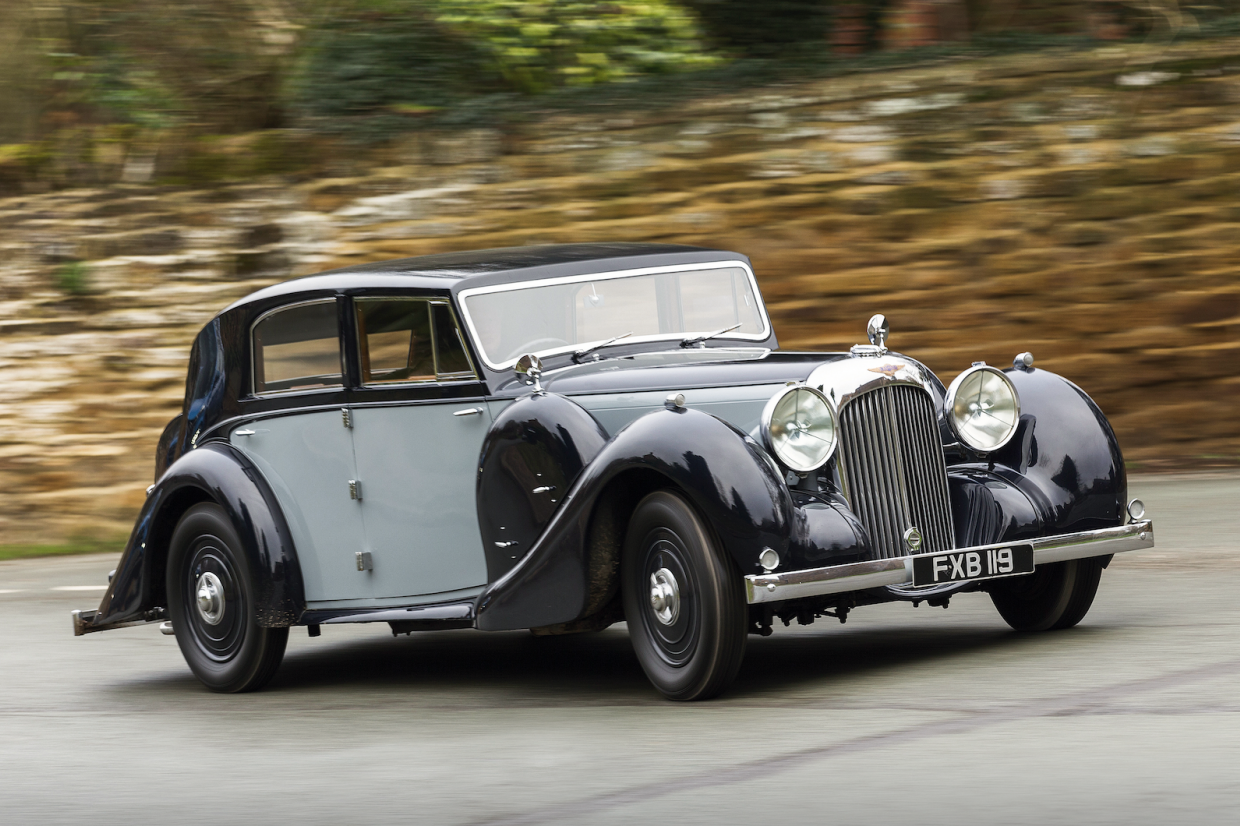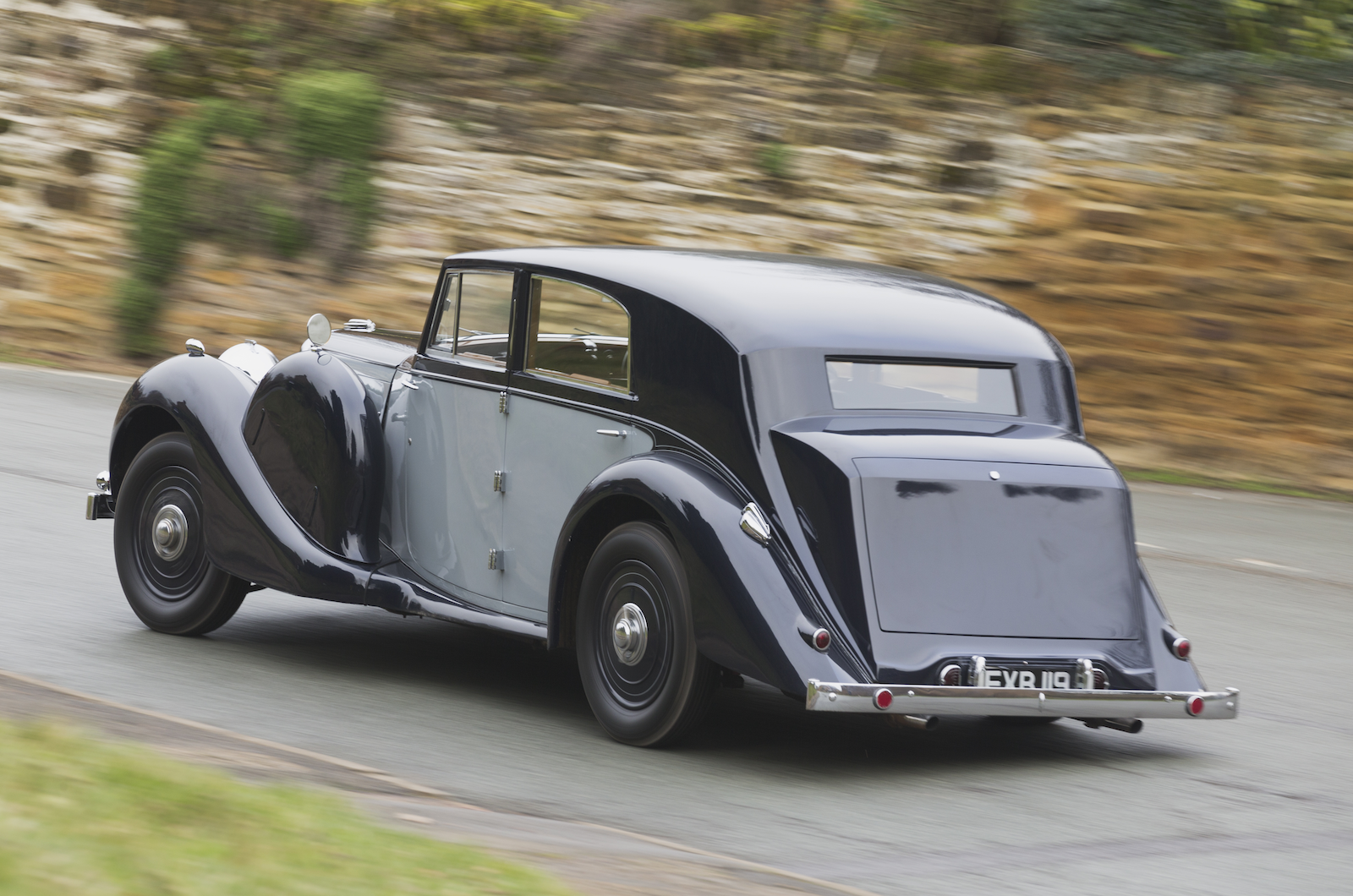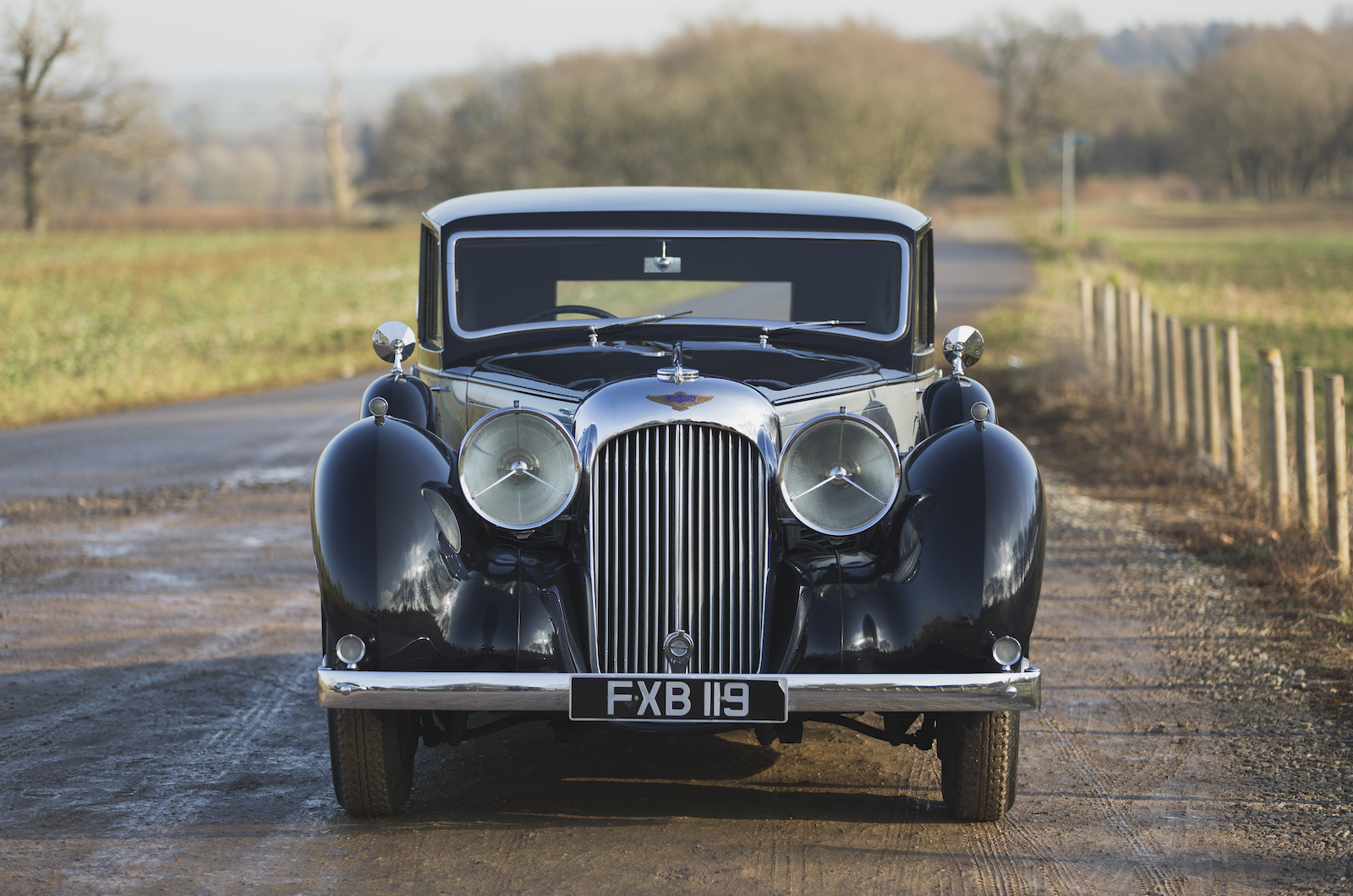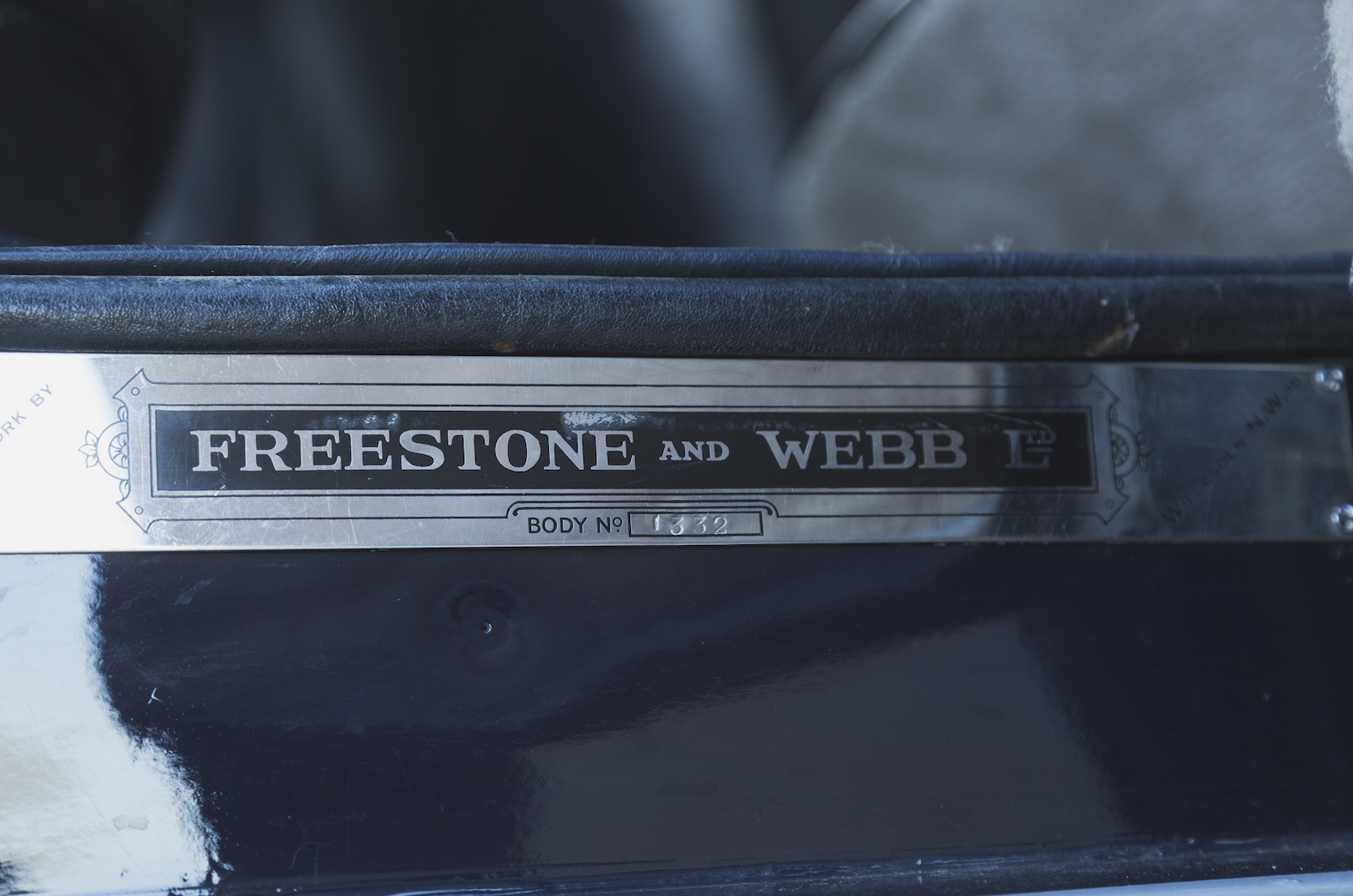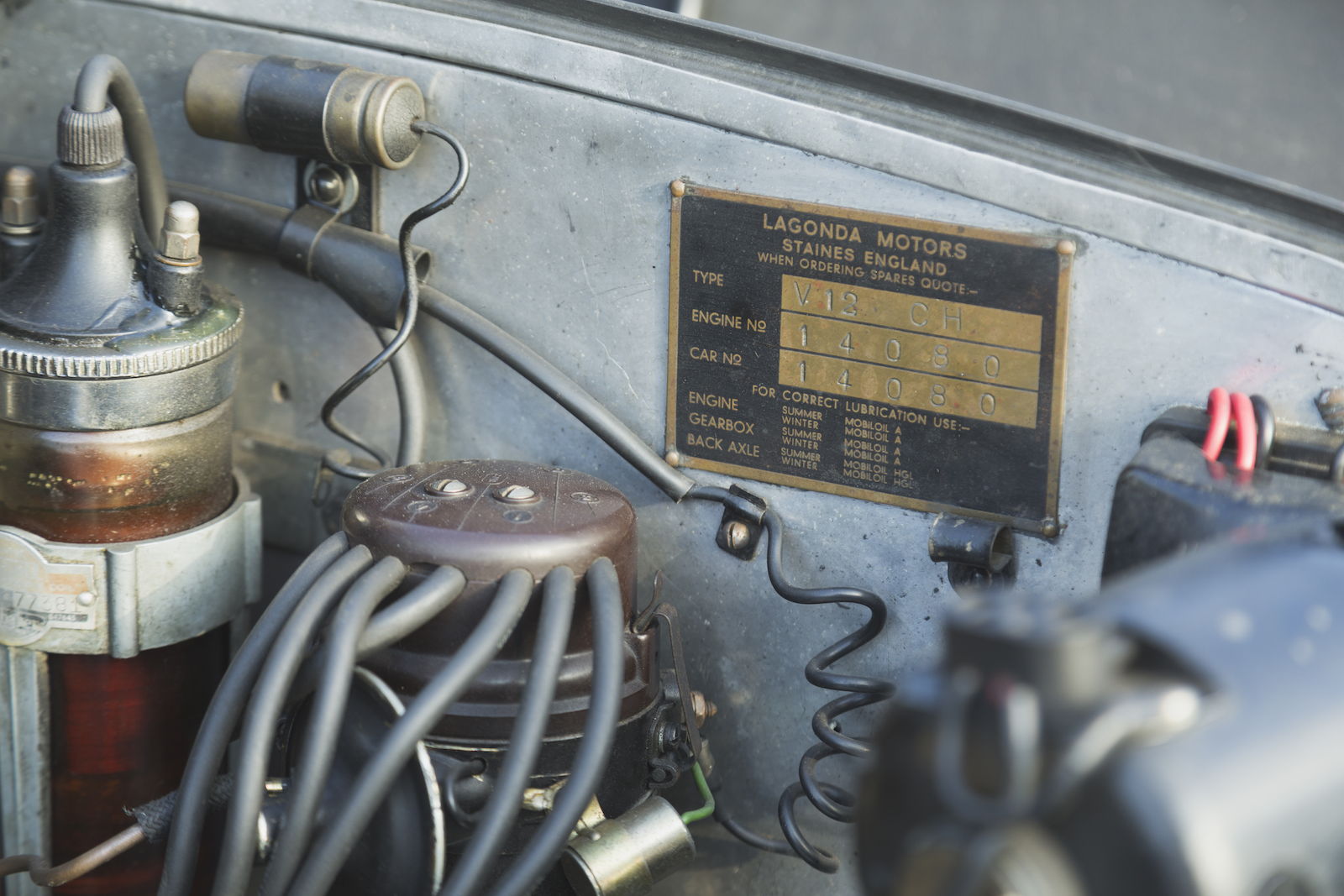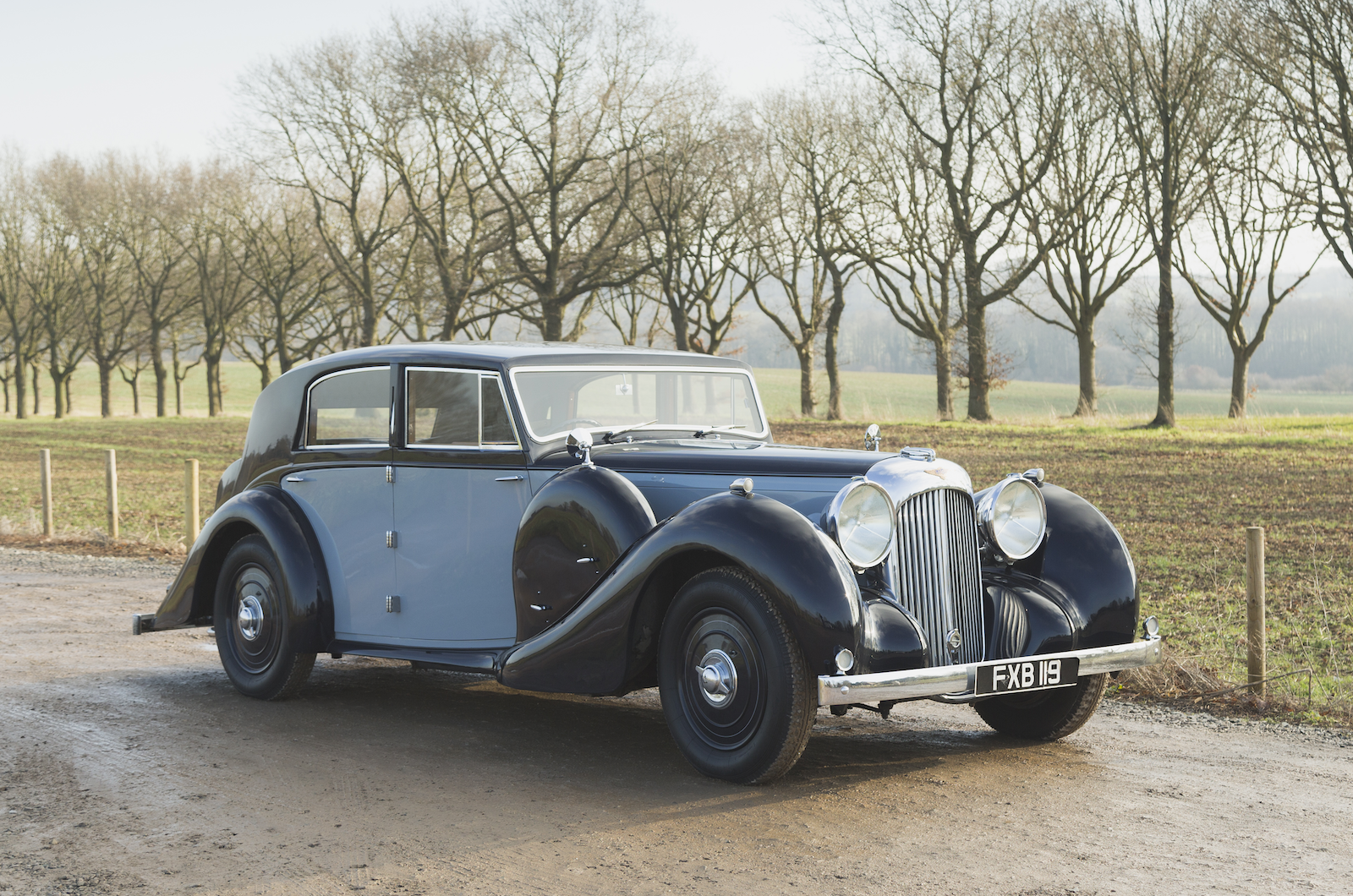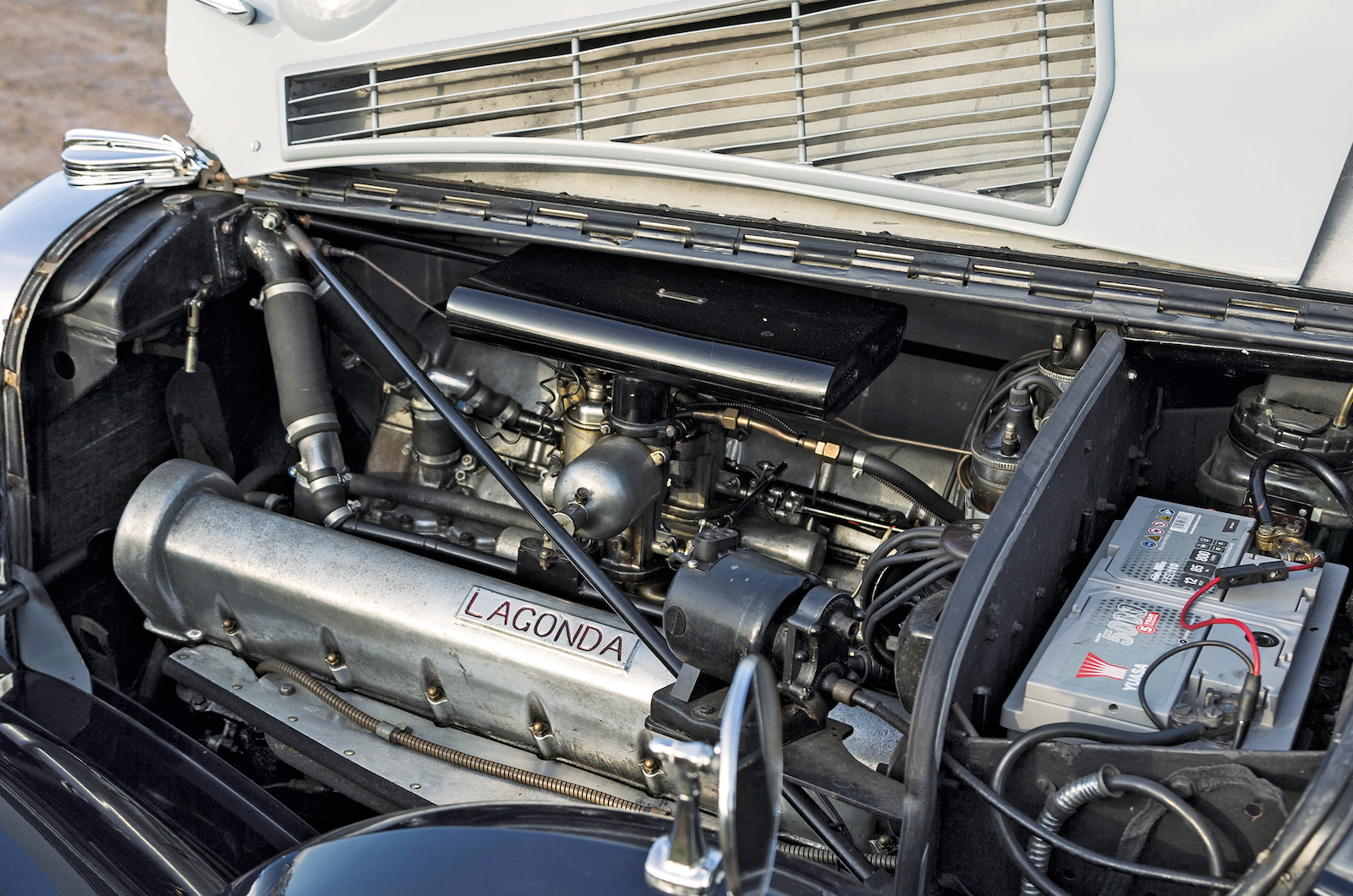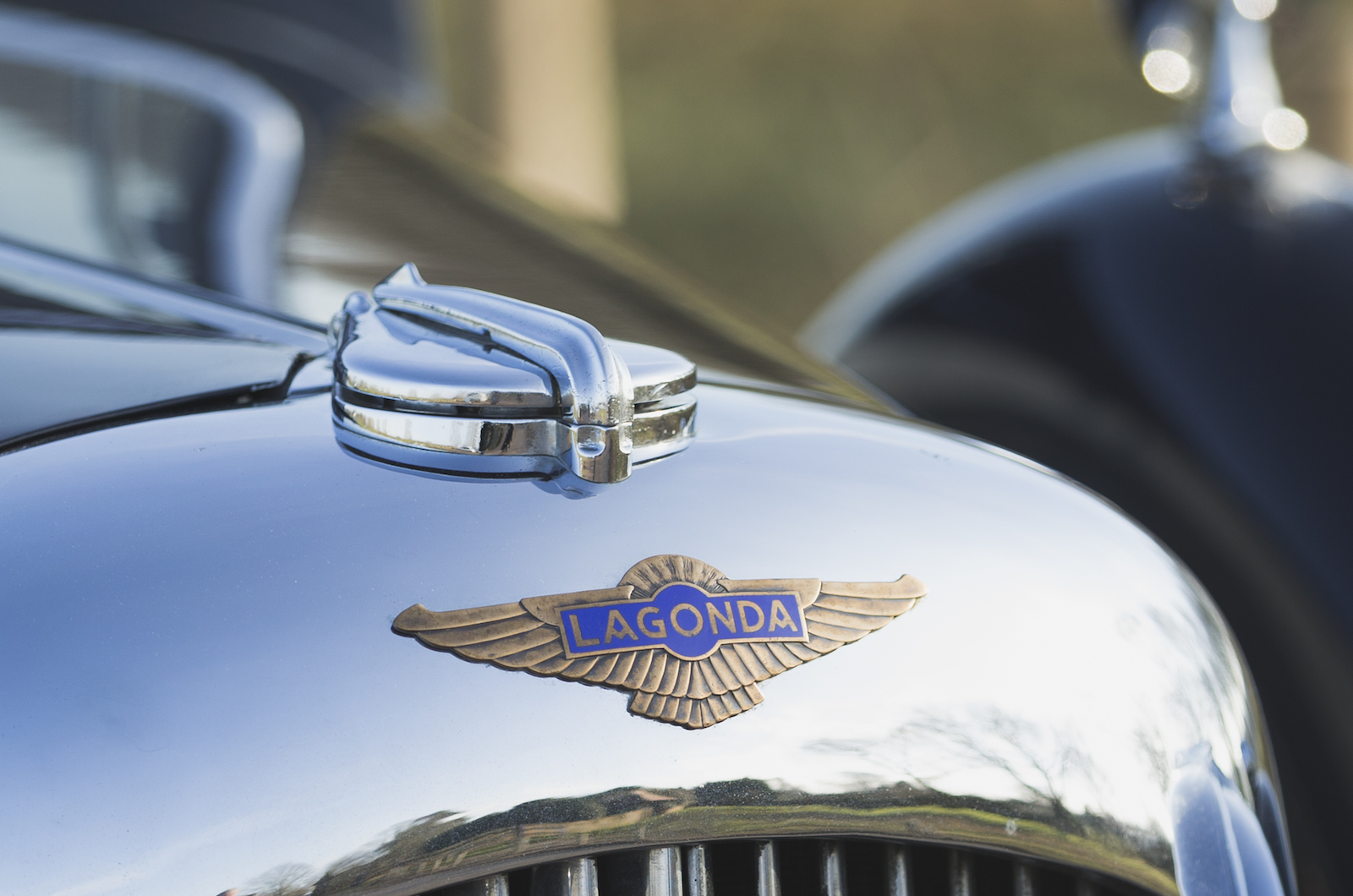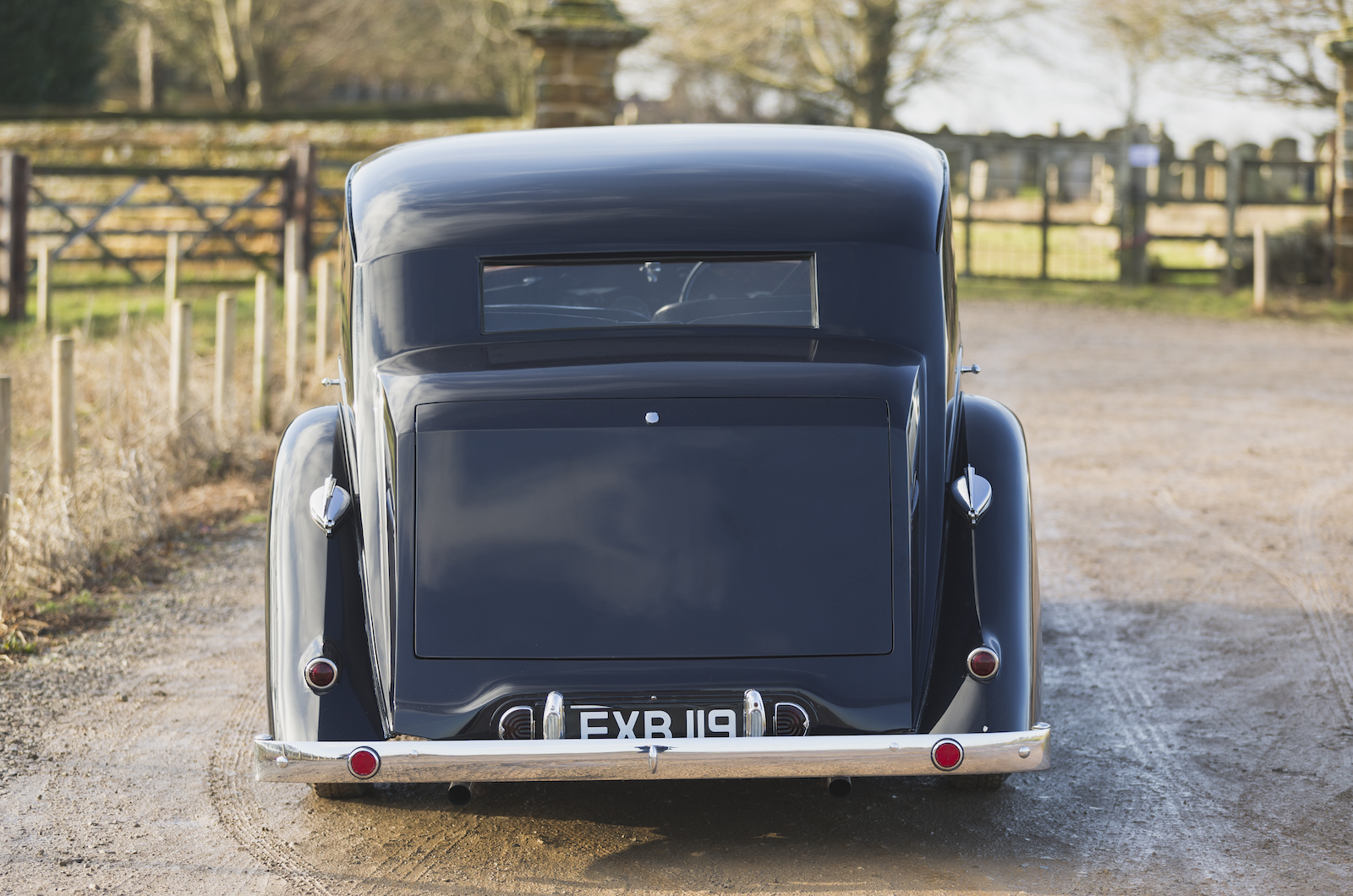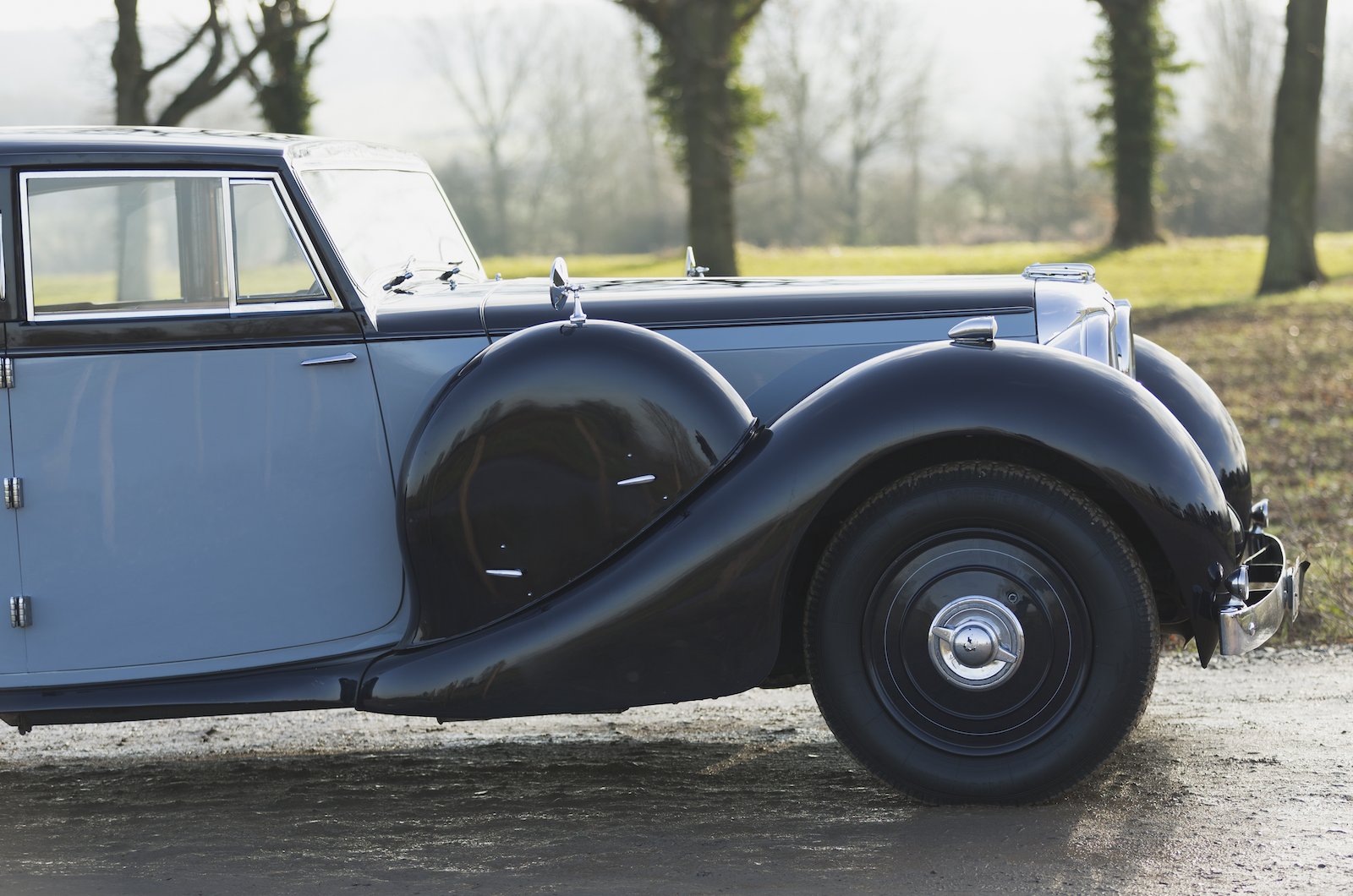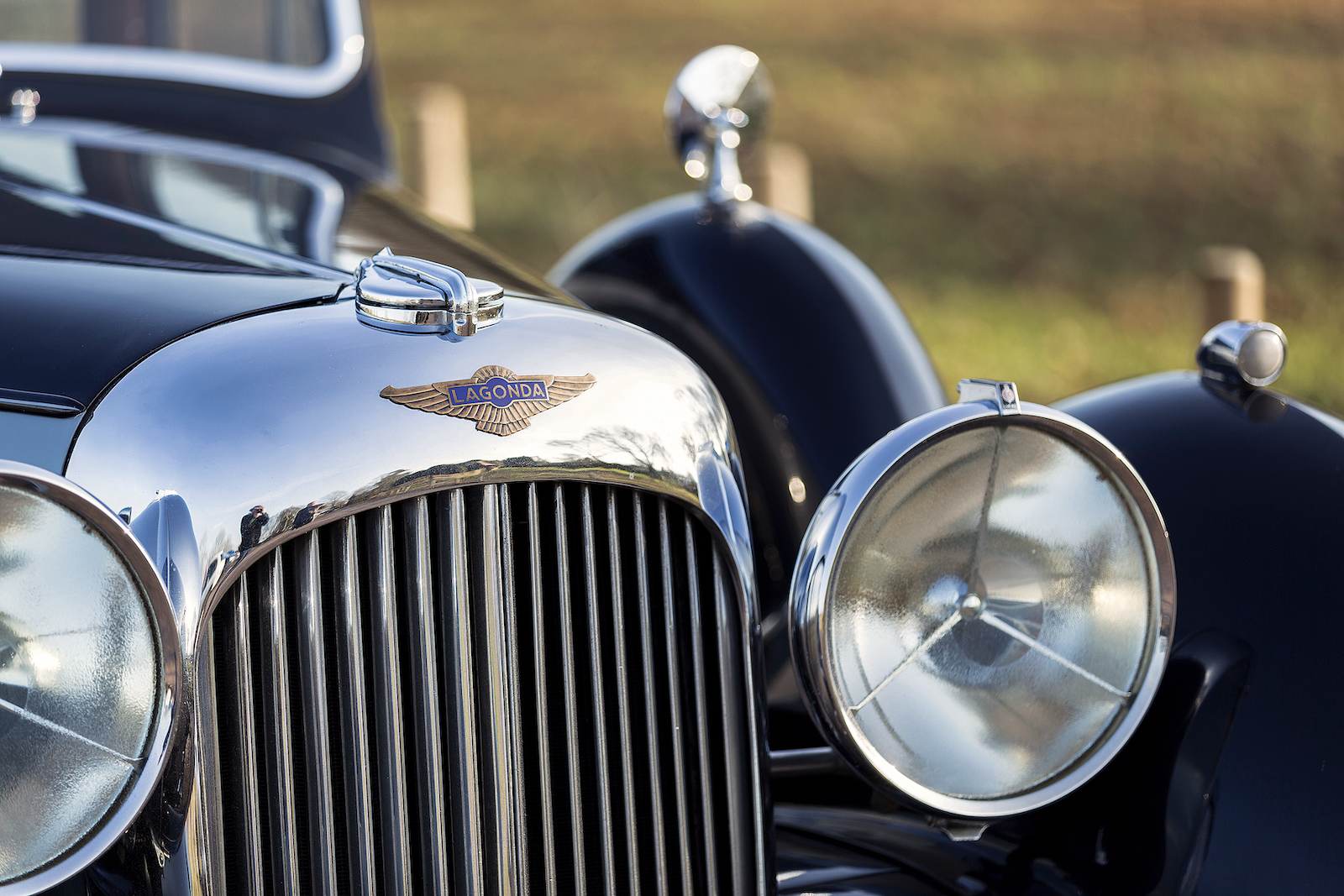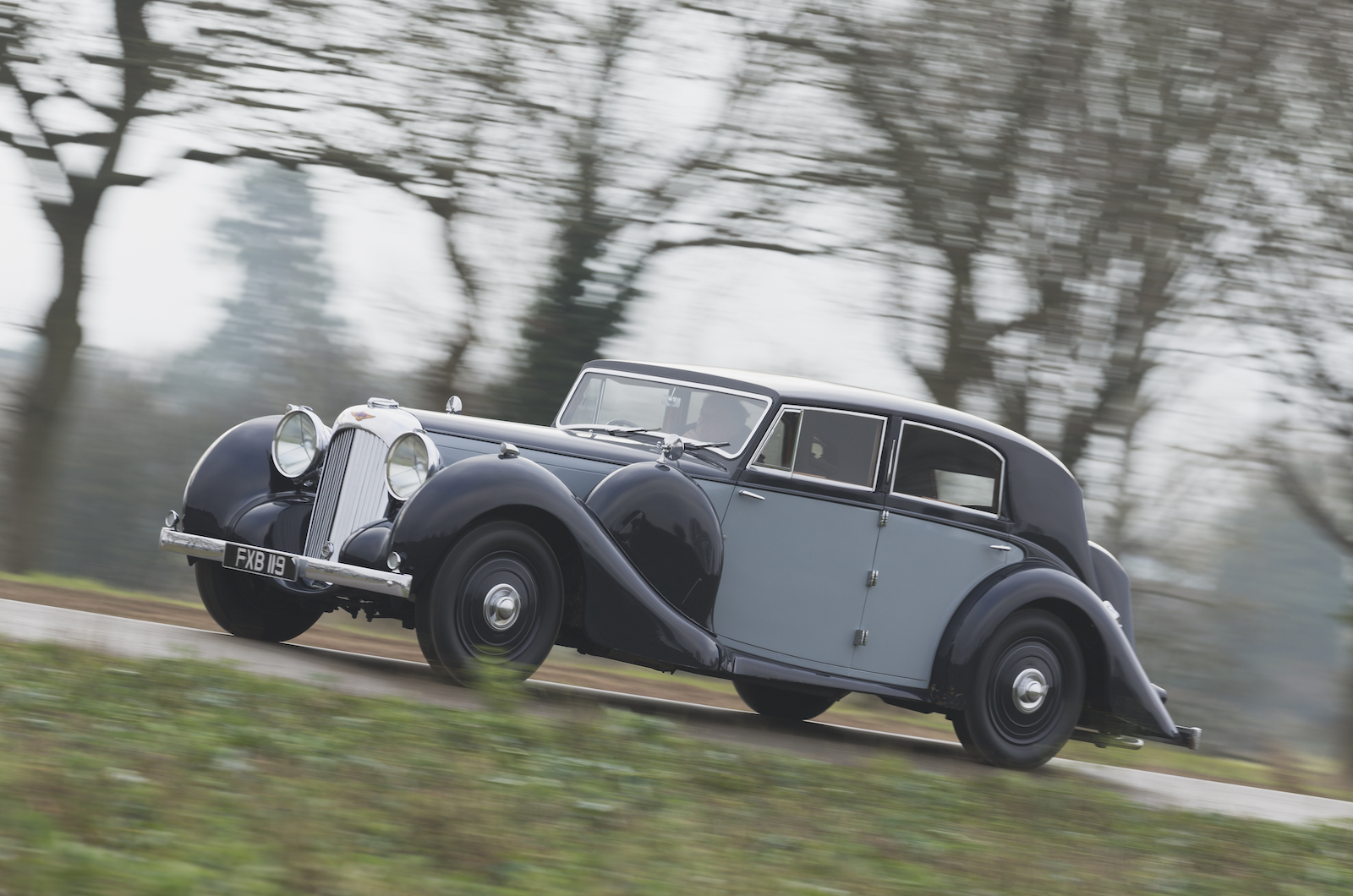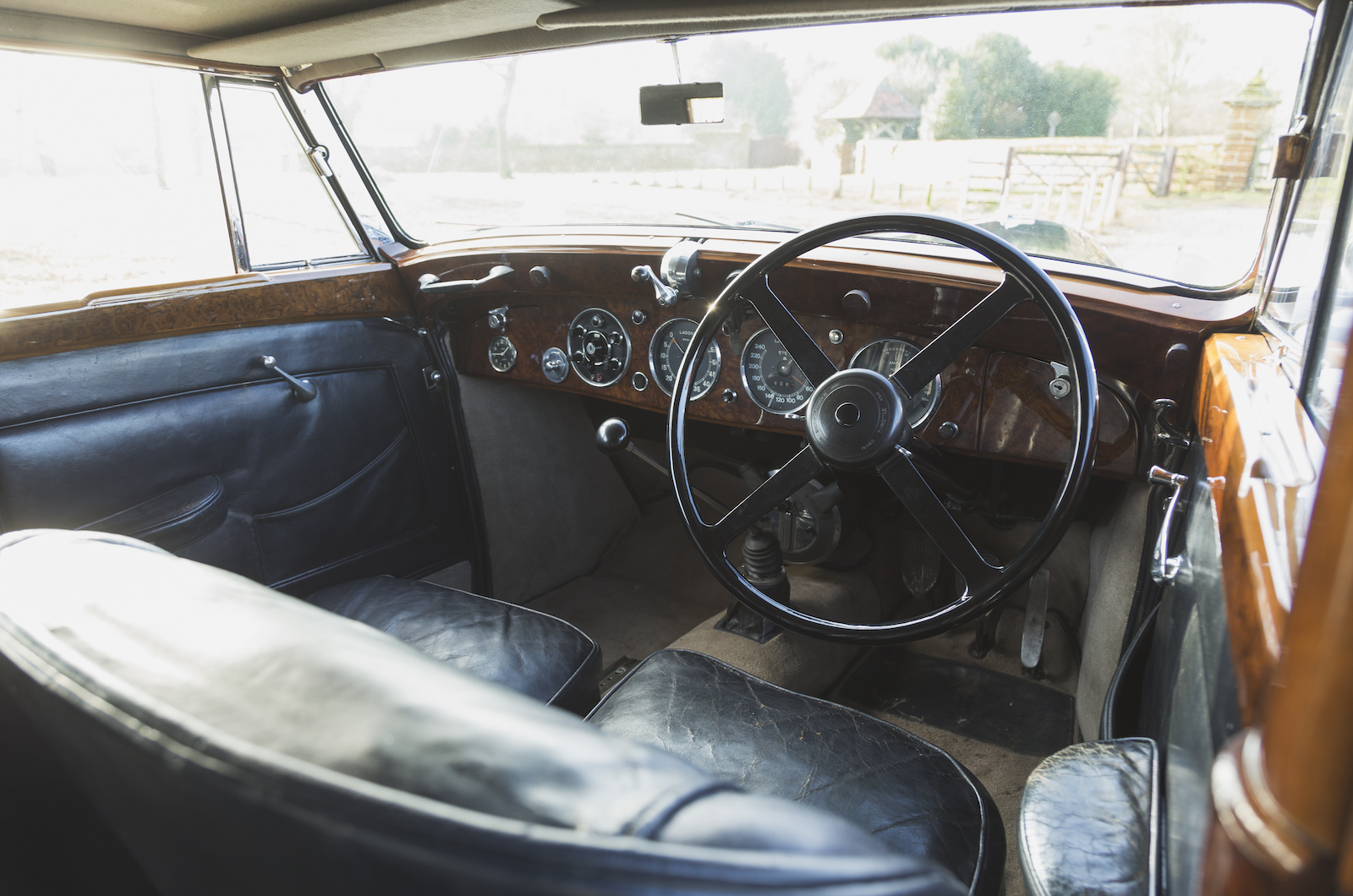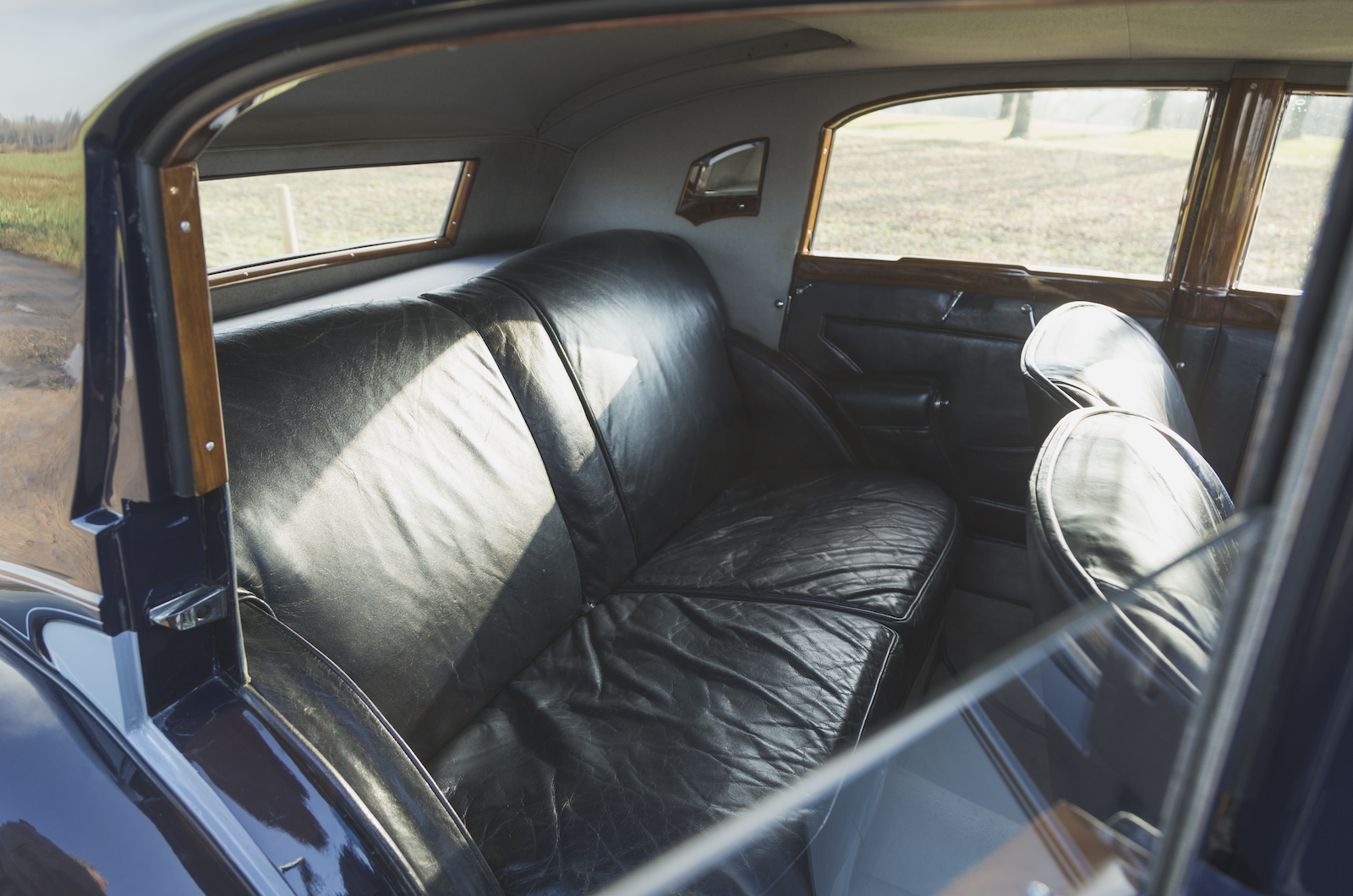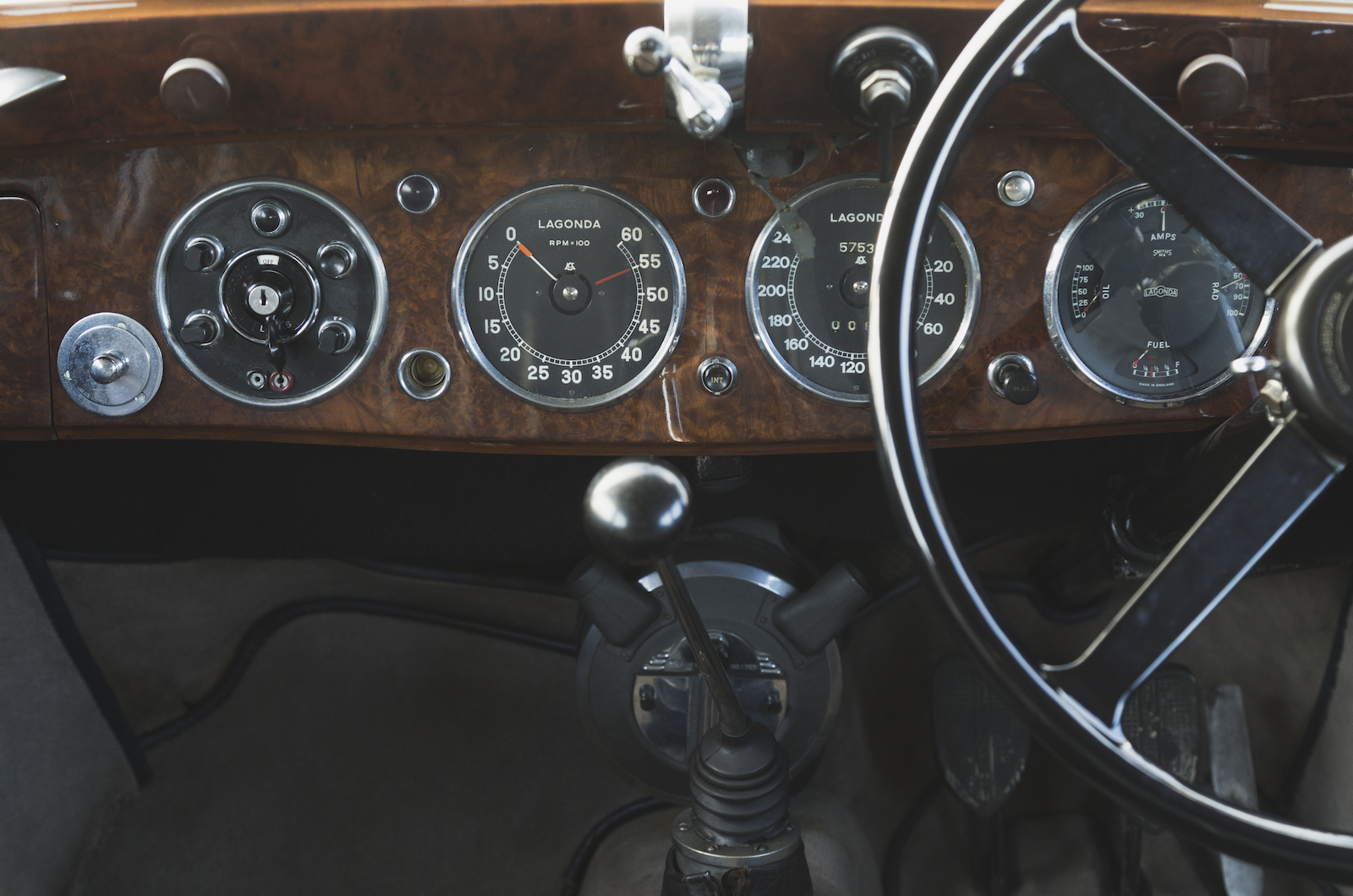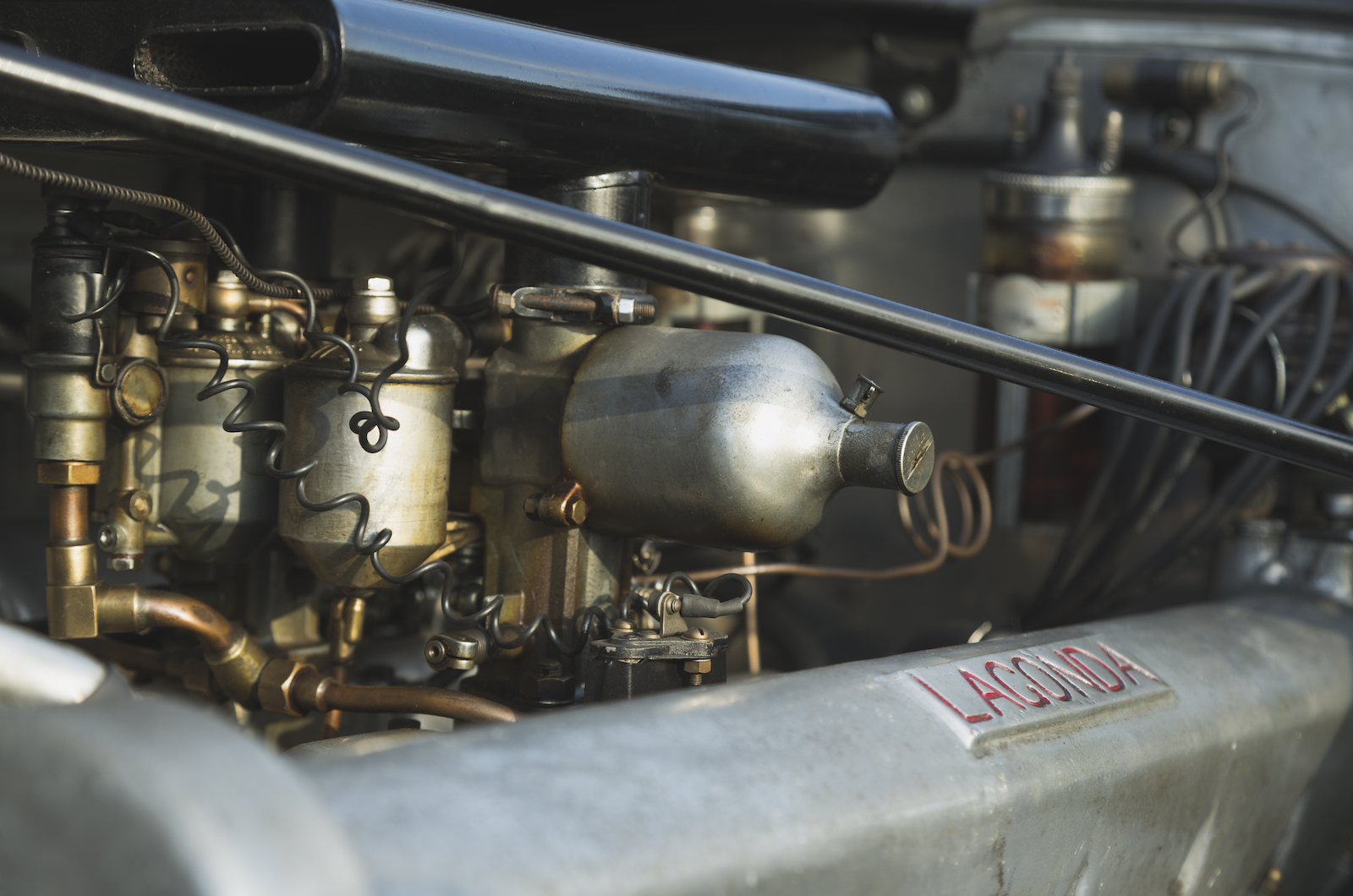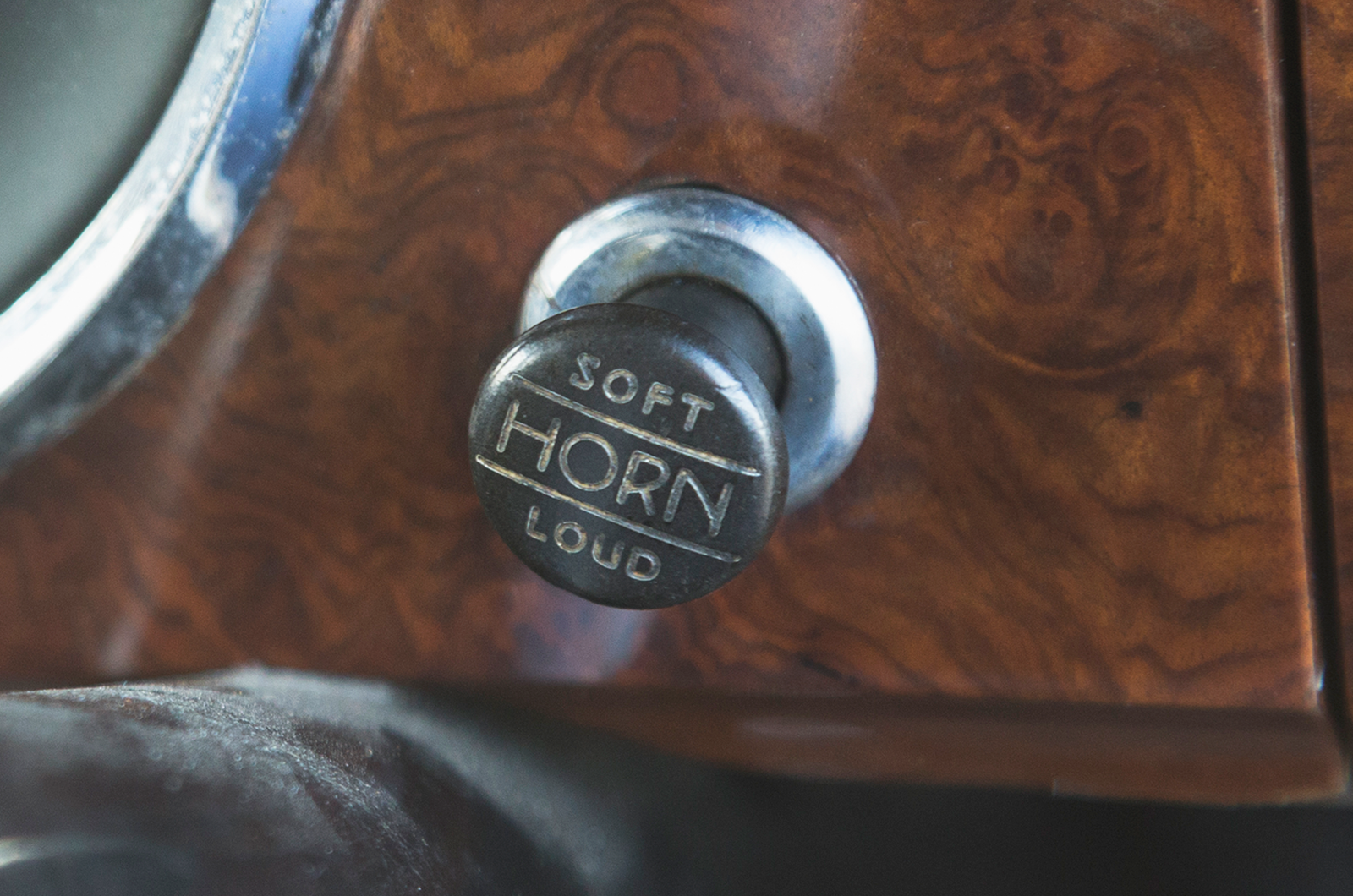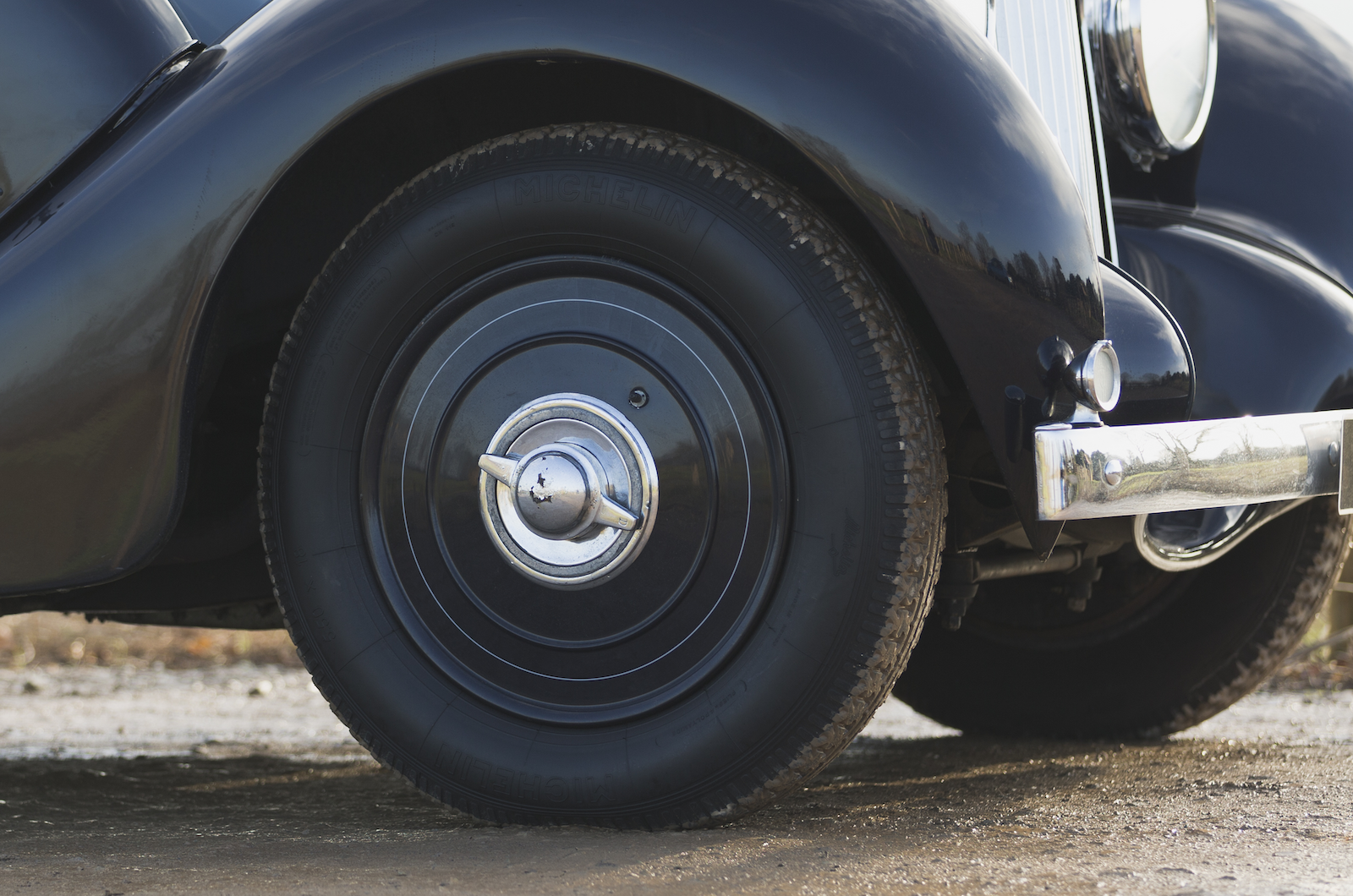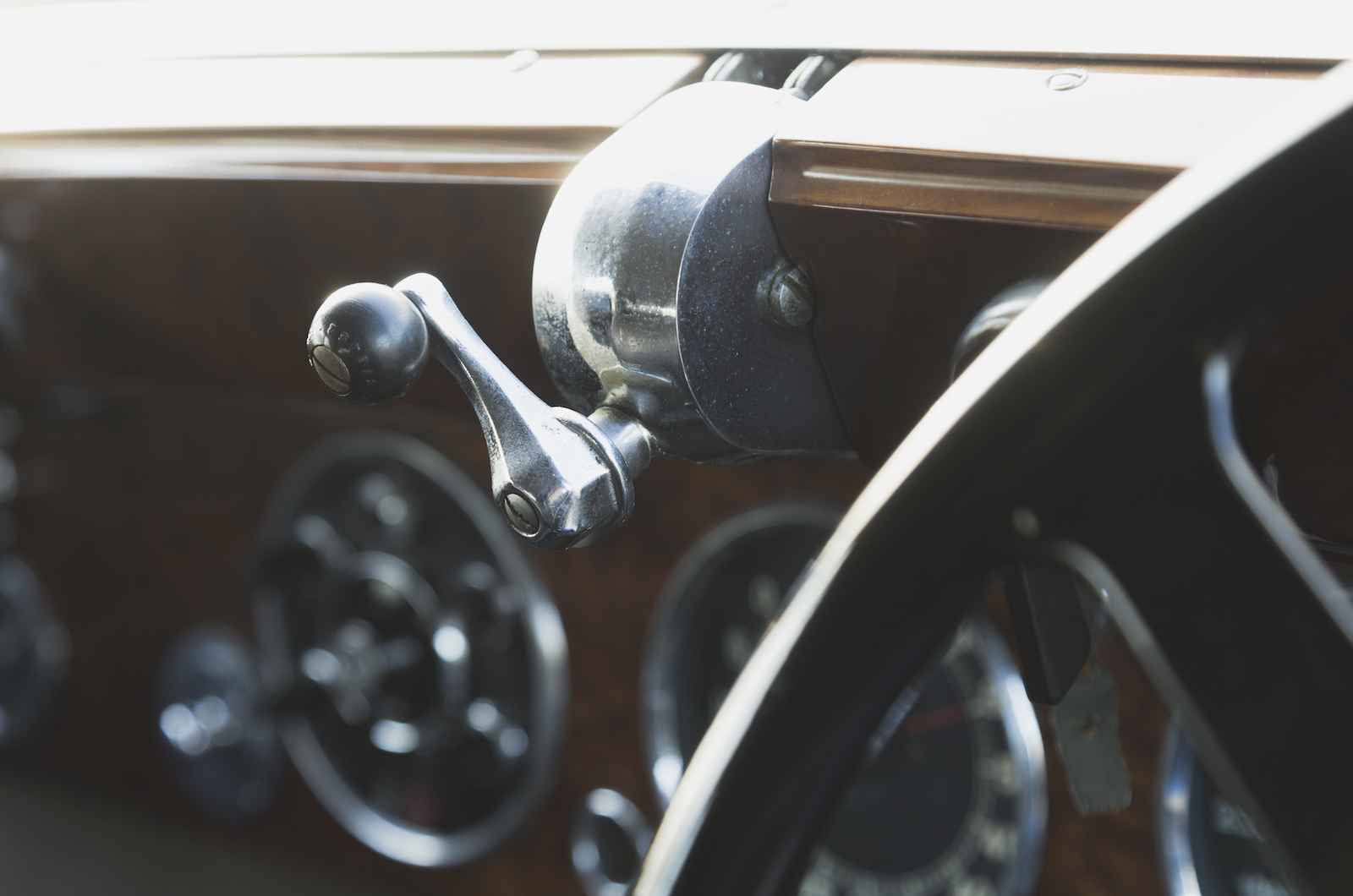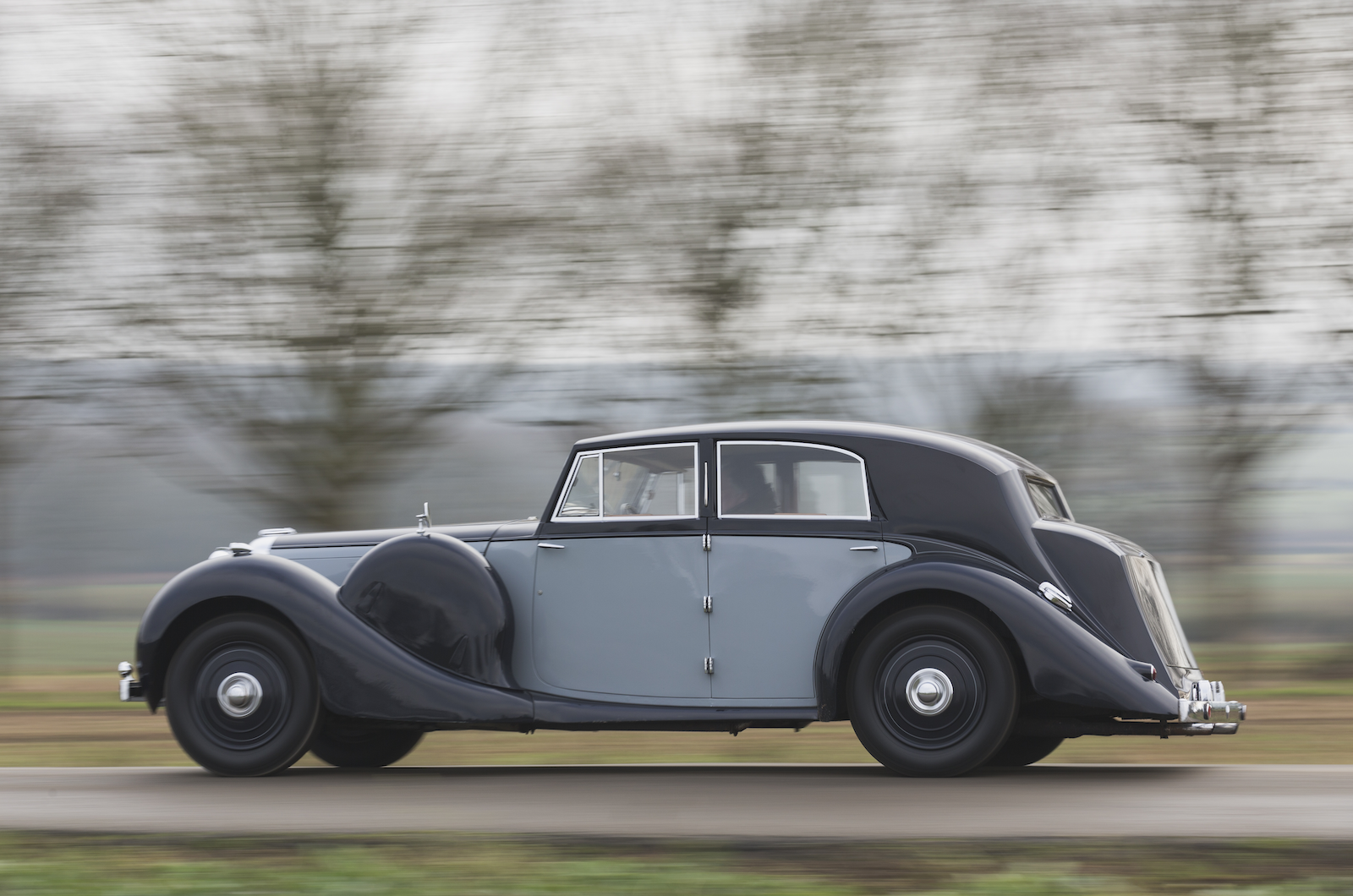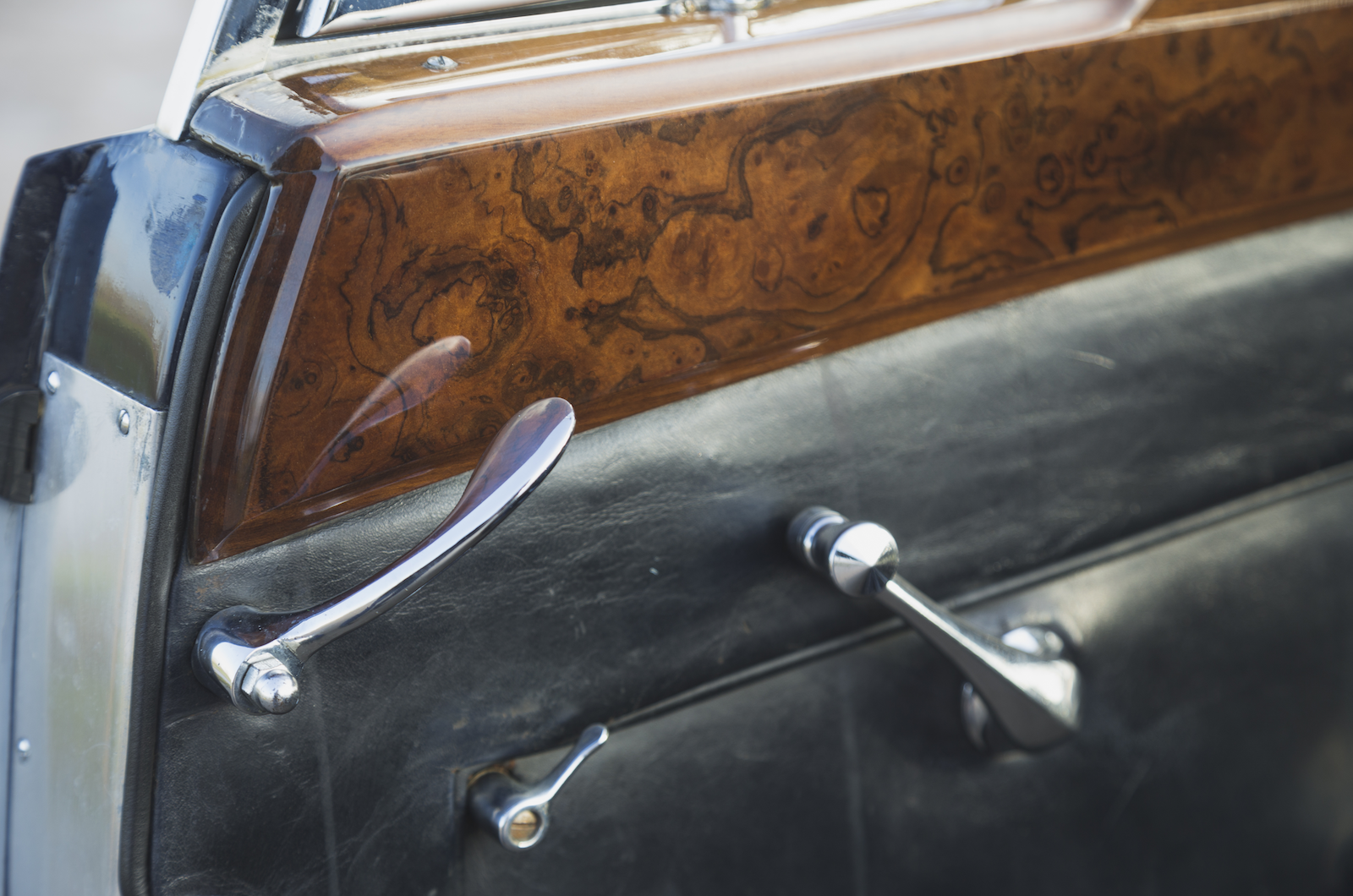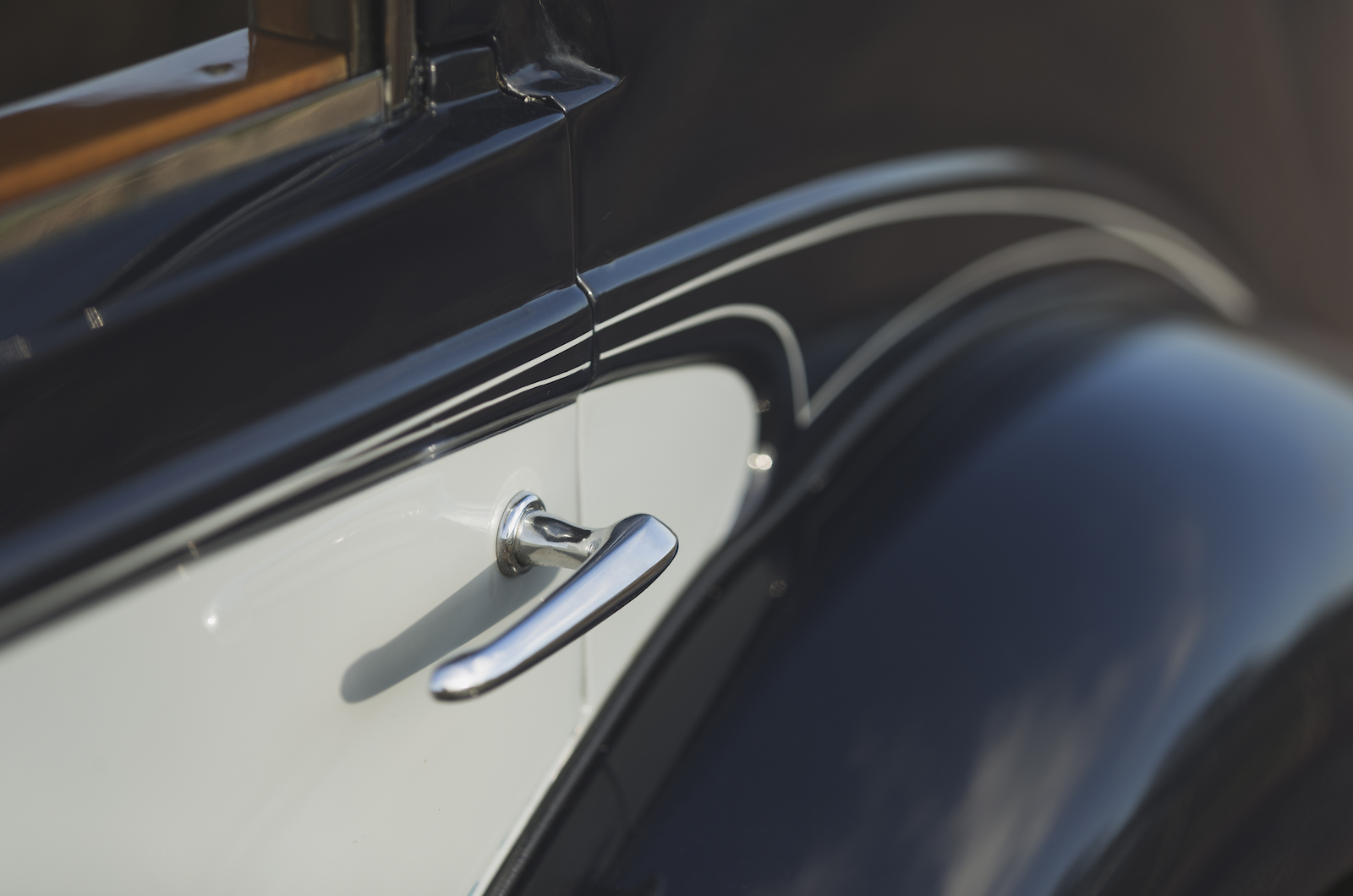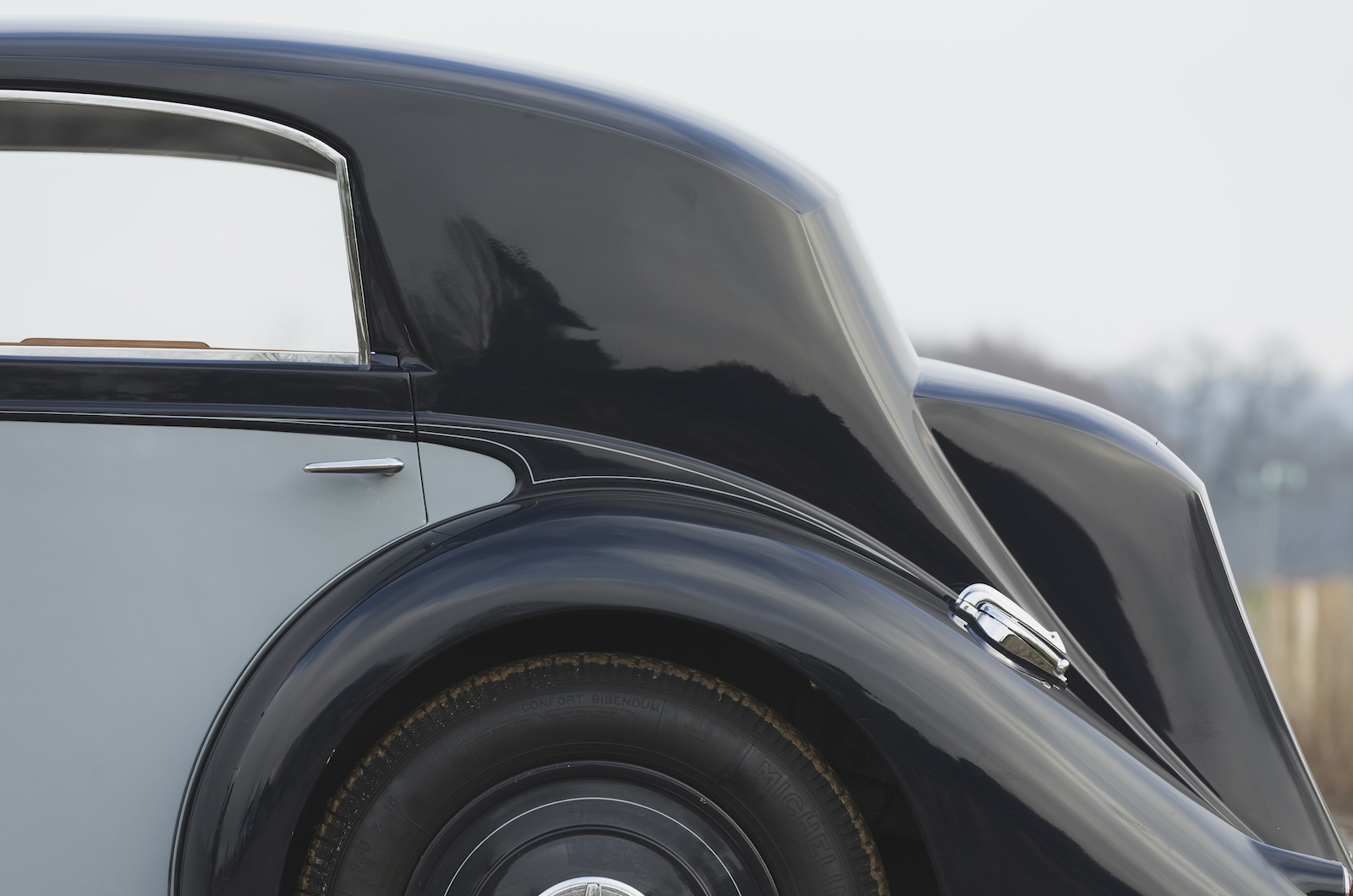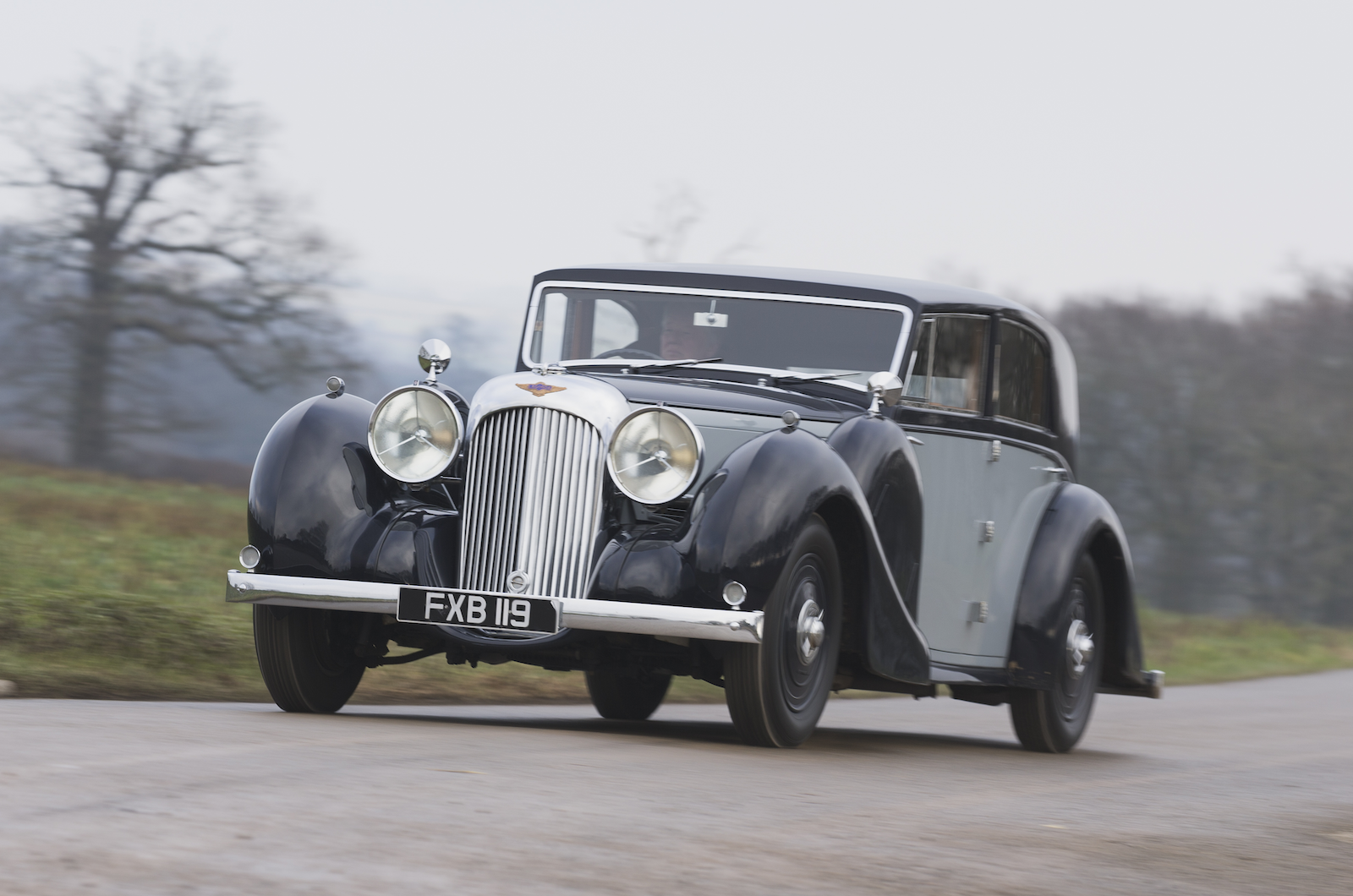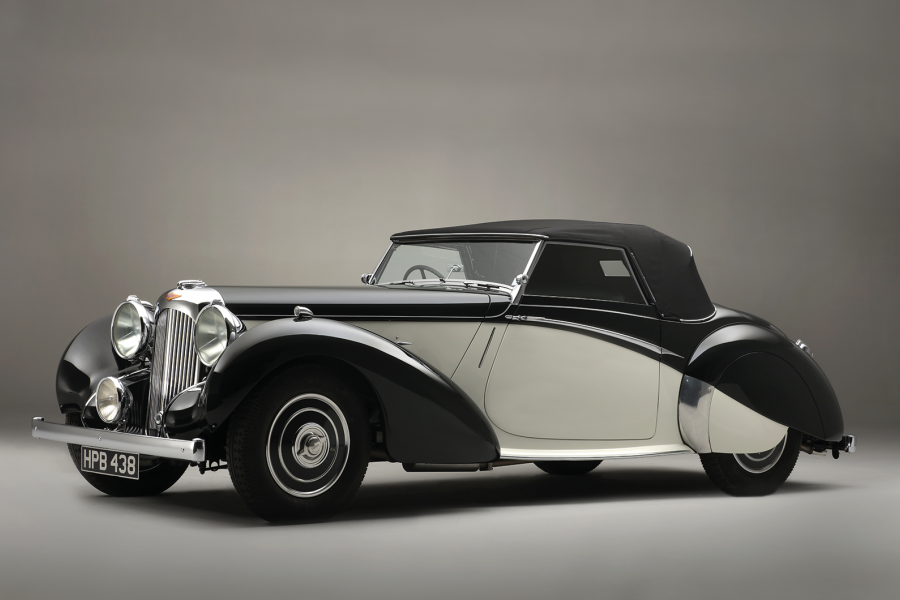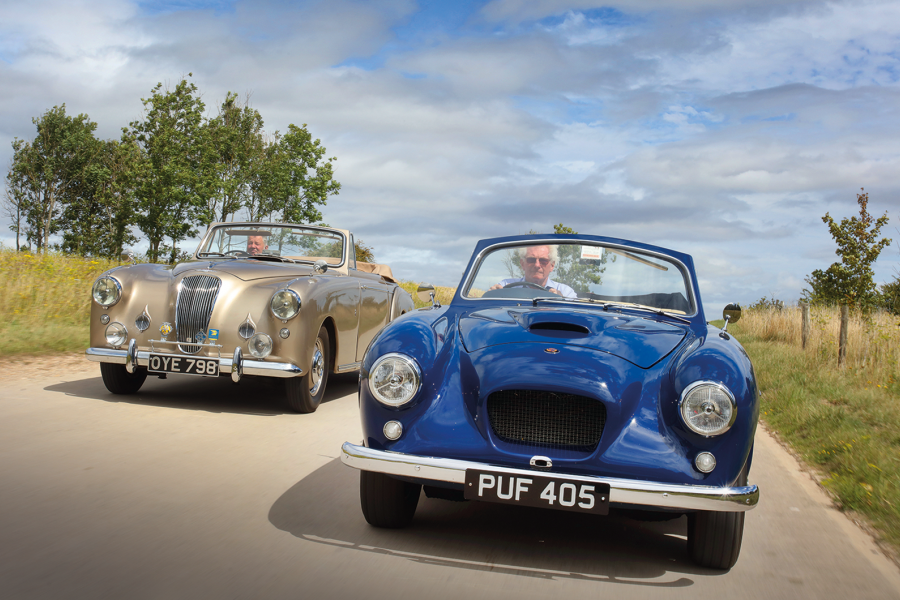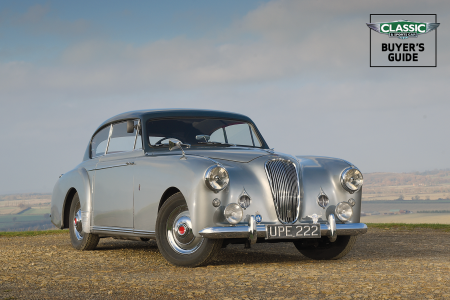The window winders have a silky, low-geared action, and there are delightful little catches for the door locks and quarterlights.
The chromed Art Deco-style heater by your ankles looks good and works well, or for fresh air you can wind out the top-hinged windscreen.
‘The engine is silken but not entirely silent’
There are narrow but deep lockable gloveboxes on either end of the dashboard, with the big, chrome-bezelled speedometer and rev counter as a centrepiece.
Most of the important functions are in a switch box to the left, but a loud/soft control for the hooters behind the steering wheel catches the eye. The seats are close together and you do feel the absence of a centre armrest.
The sound of the starter, somewhat high pitched and almost aeronautical, flows seamlessly into the smooth pick-up of 12 cylinders.
The engine is silken but not entirely silent and set to run fast on the steering boss controls (which also work the hard/soft setting for the rear dampers) while it warms up.
There are ‘polite’ and ‘angry’ settings for the Lagonda’s horn
With synchromesh on second, third and top in the Lagonda-built G80 gearbox, shifting ratios is no problem.
The precise and well-damped lever works across a narrow gate that occasionally catches you out, but the synchros are effective and the gears are quiet, as is the whole car as an entity – although I’m not sure if, as a passenger, I’d quite be nodding off at 100mph as The Autocar reported in its ecstatic 1938 road test.
The weekly magazines loved the V12 and didn’t need much of an excuse to drive one: when The Motor told how it had touched 109mph in a Lagonda V12, questions were asked in the House of Commons about public safety.
The Lagonda’s skinny 18in tyres tend to follow ruts
You don’t need bottom gear often – you can pull away almost as quickly in second and then, if you’re feeling lazy, go straight to top.
Full exploitation of the gears produces thrusting acceleration more akin to a post-war MkVII Jag than a big pre-war saloon.
The next impression is how well the car rides and how eagerly it corners.
The skinny 18in tyres tend to follow ruts, but in other respects there is a 1950s feel to the handling, which is far from unwieldy as long as you’re willing to put in some police Wolseley-style wheel-feeding on roundabouts.
The windscreen of the V12 can be wound open
There is more than enough power to break away the tail, but the giant four-spoke wheel (you need its size for low-speed manoeuvring), connects to a fairly direct linkage so keeping things tidy is easy.
Tight turnarounds aren’t an issue thanks to the decent lock: just keep the wheels rolling and an eye on that blindspot.
The pedals are close together, so it’s easy to press the clutch and brake at the same time until you get used to the spacing.
The clutch is not too heavy – and easy to control – but, as Biddulph warned, the brakes are deeply uninspiring despite the impressive dimensions of the drums and the twin master cylinders.
‘Its dominance of other traffic must have been sensational in the 1930s’
The car always stops in time – and in a straight line – but the long travel and uncertain response are inhibiting.
That’s a shame, because the V12, with its magnificent views along the bonnet to those gleaming P100s, feels otherwise like a chariot of the gods.
It revs sweetly, smoothly and freely to 4500rpm and beyond, covering the ground with almost indecent haste for an 85-year-old car.
Accompanied by its lusty turbine hum, its dominance of other traffic must have been sensational in the 1930s, and today you get the sense that the Lagonda wants to surge past slow-moving moderns. Only the knowledge that they can stop a lot faster prevents you from doing so.
The Lagonda’s suicide-opening doors aid ingress
Giving engineers free rein to pursue their ideals doesn’t always work, but the fact that only 189 V12 Lagondas were ever built is probably as much down to the outbreak of WW2 as it was buyer resistance to the car’s price and complexity.
The two-year wait for the first production V12s probably didn’t do much to boost customers’ confidence, but development would almost certainly have continued had the war not started.
Deliveries carried on into 1940, mainly for American buyers at the end: when it was shown at New York in 1939, the V12 Rapide was noted to be the most expensive car on display that year.
Lagonda supplied 100 V12 units to the Navy during WW2
With four SU carburettors and a 115mph top speed it was probably the fastest as well, this induction set-up having been derived from the lightweight two-seater V12s that had finished third and fourth at Le Mans that year.
That wasn’t the end of the V12 story.
During WW2 Lagonda supplied 100 units to the Navy to use in explosive-packed launches intended to pierce the armour of unsuspecting battleships.
The V12 also briefly replaced Isotta Fraschini engines in a new torpedo-boat design by Vosper, the firm responsible for Sir Malcolm Campbell’s Blue Bird K4.
‘The V12 was the crowning achievement of WO Bentley’s career and easily the best car ever to wear the Lagonda badge’
When it became clear that the V12 needed regular 18-hour overhauls, however, the Admirality switched to Ford V8s.
In peacetime two cars were built up out of parts, but the size, complexity and thirst of the V12 meant it wasn’t a saleable product for the austerity years.
The V12 was the crowning achievement of WO Bentley’s career and easily the best car ever to wear the Lagonda badge; it exceeded my expectations (a rare occurrence).
In a world of hype it is a car that actually looks as if it’s worth its £165,000 price-tag, which is even rarer.
I’m looking forward to driving another.
Images: Luc Lacey
Thanks to Vintage & Prestige
Factfile
Lagonda V12
- Sold/number built 1938-’40/189
- Construction steel ladder-frame chassis, ash body frame, aluminium panels
- Engine nickel-iron crankcase and heads, sohc-per-bank 4480cc 60º V12, twin SU carburettors
- Max power 180bhp @ 5500rpm
- Max torque n/a
- Transmission four-speed manual, RWD
- Suspension: front independent, by double wishbones, torsion bars rear live axle, leaf springs; Armstrong lever-arm dampers f/r
- Steering Marles worm and roller
- Brakes drums
- Length 16ft (4877mm)
- Width 6ft 2in (1880mm)
- Height 5ft 3in (1600mm)
- Wheelbase 10ft 4in (3150mm)
- Weight 4368Ib (1981kg)
- 0-60mph 12.9 secs
- Top speed 103mph
- Mpg 11-13
- Price new £1200
- Price now £165,000*
*Price correct at date of original publication
READ MORE
From the past with presence: Bristol 405 vs Lagonda 3 Litre
Also in my garage: a tank engine
Rolls-Royce Phantom V: star conveyance
Martin Buckley
Senior Contributor, Classic & Sports Car
